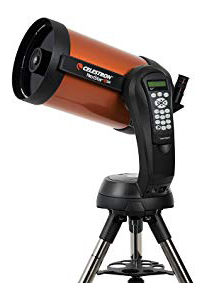Below I describe details of my astronomical observations, in amateur and professional contexts. The areas to which I personally dedicate the most time are tracking variable stars and detecting exoplanetary transits, although I have also ventured into asteroid astrometry, nova/supernova monitoring, and data mining projects. I also contribute with observation reports for databases of AAVSO, MPC, IMO, ETD, etc.
Astronomy from Antofagasta
![]() Antofagasta It is located at 23º S and 70º W, very close to the line of the Tropic of Capricorn and adjacent to the Atacama Desert, one of the best places in the world for astronomy. This city has the same limitations as any other for observation (clouds, humidity, light pollution, etc.); However, from ~50 km away - going into the desert - we find mostly dark and clear skies.
Antofagasta It is located at 23º S and 70º W, very close to the line of the Tropic of Capricorn and adjacent to the Atacama Desert, one of the best places in the world for astronomy. This city has the same limitations as any other for observation (clouds, humidity, light pollution, etc.); However, from ~50 km away - going into the desert - we find mostly dark and clear skies.
personal instrumentation
 Telescope: Celestron NexStar 8 SE computerized, with some modifications (replacement of the altazimuthal mount with a Celestron Advanced GT equatorial; replacement of the “red dot” finder with a Celestron 9×50 mm finderscope; addition of an equatorial wedge to reach 23º declination; addition of a special support for piggy-back astrophotography).
Telescope: Celestron NexStar 8 SE computerized, with some modifications (replacement of the altazimuthal mount with a Celestron Advanced GT equatorial; replacement of the “red dot” finder with a Celestron 9×50 mm finderscope; addition of an equatorial wedge to reach 23º declination; addition of a special support for piggy-back astrophotography).
Accessories: Various 1.25” eyepieces, Plössl and Omni series; planetary, lunar, narrowband filters, etc.; Atik 314L+ and Meade DSI Pro II CCD cameras; other cameras and accessories related to astrophotography.
In Myself astrophotographic album You can see examples using some of this instrumentation.
Runs in observatories
![]() Within my activities collaborating in a professional context, I have had the opportunity to observe and perform functions within professional observatories, as a telescope operator (in-person/remote) and assistant:
Within my activities collaborating in a professional context, I have had the opportunity to observe and perform functions within professional observatories, as a telescope operator (in-person/remote) and assistant:
- Cerro Tololo Inter-American Observatory: SARA 0.6-m, SMARTS 0.9-m
- ESO La Silla Observatory: Danish 1.54-m
- ESO Paranal Observatory: UT4 8.2-m (Yepun)
- Cerro Armazones Observatory (U. Católica del Norte): 0.41-m Telescope
- Ckoirama Observatory (U. de Antofagasta): 0.6-m Telescope
- Searchlight Observatory Network (San Pedro de Atacama): 0.5-m Telescope
Highlights
- discoverer of 2014 OL339, an Aton-class NEA (Near-Earth Asteroid) and the 4th known quasi-satellite of the Earth, within the framework of a collaboration between the Astronomy Center of the University of Antofagasta and EURONEAR. Its quasi-satellite status was concluded in a subsequent study, published in MNRAS (2014). Read a related article here (in English).
- Co-author of the paper on the discovery of the presence of a ring system - the first of its kind - on the asteroid 10199 Chariklo, published in Nature (2014). Read a related article here (in English).

